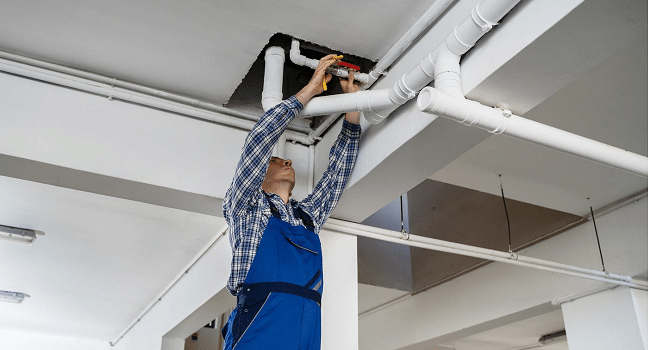Water damage can cause structural problems, health risks, and financial obligations for both houses and businesses. Whether it’s from a burst pipe, a leaky roof, or a natural disaster, prompt and accurate assessment is crucial to mitigating the damage effectively. In this article, we’ll delve into the meticulous steps involved in a professional water damage assessment, shedding light on the process that helps restoration experts devise a targeted restoration plan.
Step 1: Initial Inspection
The initial inspection is the first stage in a water damage assessment. To determine the cause and extent of the water damage, skilled professionals from a reputable water restoration company conduct a complete examination of the impacted region. They assess visible signs such as water stains, dampness, and mold growth. Using specialized equipment like moisture meters and infrared cameras, they detect hidden moisture pockets within walls, floors, and ceilings. This comprehensive inspection lays the groundwork for the rest of the assessment process.
Step 2: Categorization And Classification
Not all water damage is the same. Restoration professionals categorize water damage into three classes based on the level of contamination:
- Clean Water (Category 1): Coming from a clean water source, such as a leaky faucet or damaged pipe.
- Gray Water (Category 2): Slightly contaminated water from sources like appliance leaks or overflow from sinks.
- Black Water (Category 3): Highly contaminated water containing pathogens and toxins from sewage backups or flooding.
Furthermore, they divide the damage into four groups according to the degree of saturation and pace of evaporation. This classification helps determine the appropriate restoration techniques and equipment needed for efficient remediation.
Step 3: Documentation And Assessment Report
Precise record-keeping is crucial for managing insurance claims and monitoring the advancement of restoration initiatives. Restoration professionals meticulously document their findings, including photographs, moisture readings, and observations made during the inspection. They compile this information into a comprehensive assessment report, detailing the extent of the damage, recommended actions, and estimated costs for restoration. This report serves as a valuable resource for both the restoration team and the property owner throughout the remediation process.
Step 4: Damage Mitigation Planning
Armed with the assessment report, restoration experts develop a tailored mitigation plan to address the water damage effectively. The actions required to remove water, dry out impacted sections, and return the property to its pre-loss state are described in this plan. Mitigation techniques can include structural drying, dehumidification, mold cleanup, and water extraction, depending on the extent of the damage. The intention is to reduce additional harm and avoid follow-up problems such as the formation of mold and structural decay.
Step 5: Restoration Execution
With the mitigation plan in place, restoration professionals proceed to execute the necessary tasks to restore the property. This may involve extracting standing water using pumps and vacuums, removing damaged materials such as wet carpets and drywall, and implementing drying techniques like air movers and dehumidifiers to eliminate moisture effectively. Throughout the restoration process, technicians continuously monitor moisture levels and adjust their approach as needed to ensure thorough drying and prevent potential complications.
Step 6: Post-Restoration Assessment And Validation
Once the restoration efforts are complete, a final assessment is conducted to verify that the property has been successfully restored to a safe and habitable condition. Technicians perform thorough inspections to ensure all traces of water damage have been addressed, and the environment is dry and free of mold growth. This post-restoration validation provides peace of mind to property owners and ensures that the restoration process has been completed to industry standards.
Conclusion
Professional water damage assessment is a meticulous process that plays a crucial part in the effective mitigation and restoration of water-damaged properties. From the initial inspection to the final validation, each step is carefully executed to identify, evaluate, and remediate the damage promptly and efficiently. By understanding the steps involved in this process, property owners can appreciate the importance of hiring skilled restoration professionals to navigate the challenges of water damage restoration successfully.
